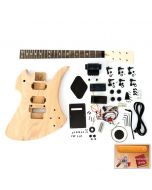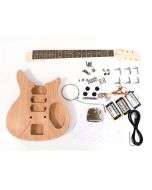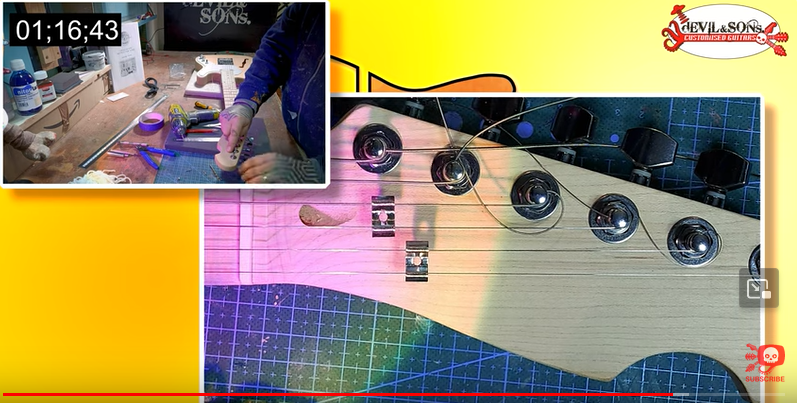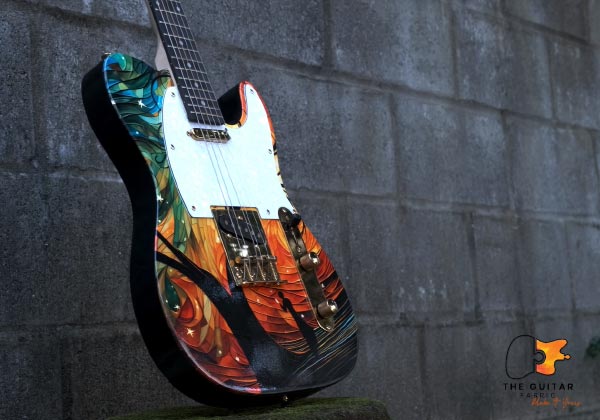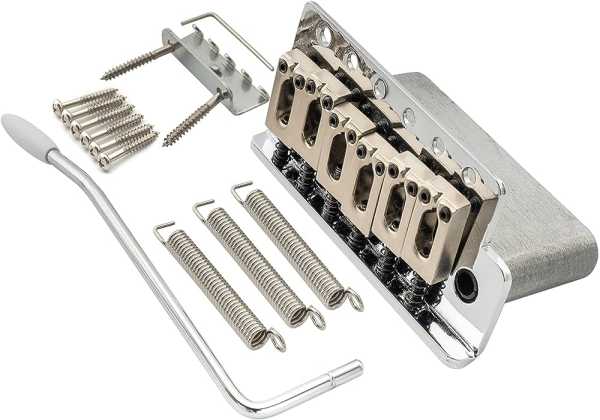
TREMOLO BRIDGE INSTALLATION & SET UP
Known for its ability to create dramatic pitch variations, the tremolo bridge adds a new layer of expression to your playing. In this comprehensive guide, we'll dive deeper into the process, focusing bride alignment, spring installation and intonation adjustment. Following these steps are crucial for a flawless pitch modulation.
Precise Bridge Alignment
Achieving pitch perfection requires precision. When installing your tremolo bridge, centering is paramount. The ideal alignment between the bridge and the neck guarantees accurate pitch modulation across all strings. Securing the bridge with the provided screws locks in this crucial alignment, setting the stage for seamless tremolo action.
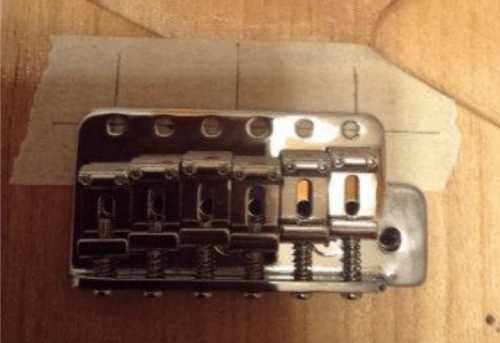
Positioning tremolo bridge on Stratocaster guitar kit
Tremolo bridge installation
The heart of any tremolo bridge setup lies in the spring mechanism. For bridge installations, this component plays a pivotal role. Install the springs within the tremolo cavity, ensuring each spring exerts balanced tension. This equilibrium is essential for maintaining consistent string tension during bends and vibrato techniques.

Rear of a stratocaster guitar body: spring fixing

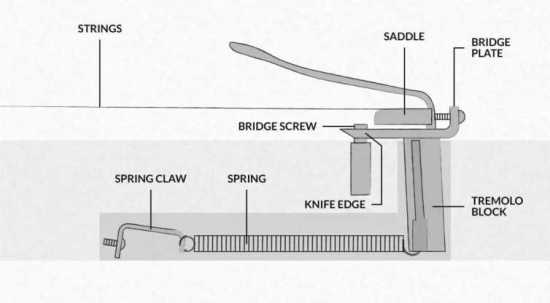
Tremolo set-up and adjustment
In order to make sure that your intonation is always accurate zhen using the tremolo bar we advise to follow this specific set-up below.
Identify Your Tremolo Type: Identify the type of tremolo system on your guitar, whether it's vintage 6-screw Fender-style, PRS floating, modern 2-point Fender, a Floyd-Rose, Ibanez Edge or a Schaller double locking system.
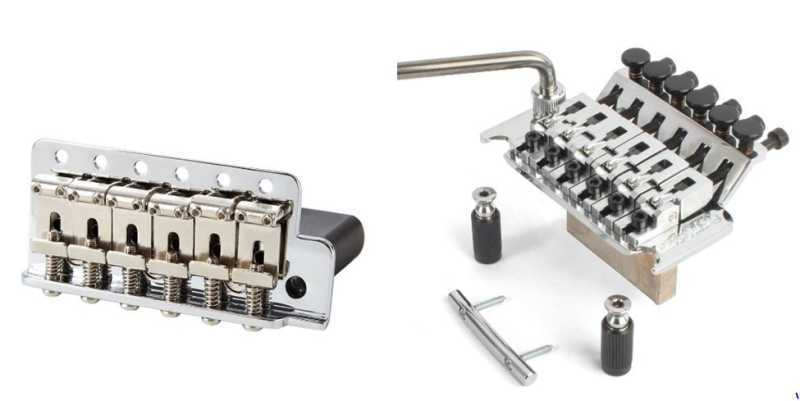
Vintage Style 6-screw Tremolo & Floyd rose tremolo
Install the Strings: Replace old strings with a fresh set of strings and tune them to pitch. Ensure they are fully stretched and tuned.

Adjust Intonation: Adjust the guitar's intonation for each string by comparing the 12th fret harmonic with the fretted note. Use your guitar tuner for accuracy. Make adjustments by moving the bridge saddles.
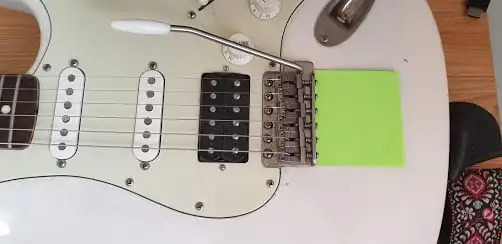
Lubricate: Clean the tremolo system and lubricate moving parts with sewing machine oil or a product like Nut Sauce. Address any issues with strings getting caught in the nut or string trees.

Balance Your Tremolo: Achieve balance between the tremolo springs and string tension to make the system float correctly. Follow these steps:
- Use Post-It Notes to set the trem height as needed.
As you restring, the tremolo may lift up; adjust the back claw to counteract string tension.
- Aim for equal tension between the strings and trem springs.
- Use fresh, fully stretched strings for reliability.
- Consult manufacturer's recommended measurements for tremolo height.
Locking Trem Systems (Floyd Rose, Ibanez Edge): For locking tremolo systems, lock the nut down to finish the setup. Ensure the tension bar above the locking nut is properly adjusted to maintain string tension. Use the spring tension in the rear trem cavity to fine-tune overall tuning if necessary.
Grounding the electronics to the spring screws
To begin, lay the groundwork for flawless tremolo functionality. In a Floyd Rose Bridge installation, attach spring screws within the tremolo cavity. A key step is to solder these spring screws to the ground wire stemming from the volume control cavity. This meticulous grounding ensures optimal signal integrity, preventing unwanted noise and interference while amplifying your guitar's sonic brilliance.

Conclusion
Achieving pitch perfection and seamless tremolo action on your guitar demands precision and attention to detail throughout the bridge alignment and setup process. Proper centering of the tremolo bridge in alignment with the neck is paramount, as it guarantees accurate pitch modulation across all strings. Equally important is the balanced installation of springs within the tremolo cavity, ensuring consistent string tension during bends and vibrato techniques.
Furthermore, when setting up your tremolo system, it's essential to identify your specific tremolo type and follow a systematic approach that includes installing fresh strings, adjusting intonation, lubricating moving parts, and balancing the tremolo to achieve proper floating. For locking tremolo systems, locking the nut and adjusting the tension bar becomes crucial.
Lastly, grounding the electronics to the spring screws ensures optimal signal integrity and prevents unwanted noise and interference, allowing your guitar's sonic brilliance to shine through.
 FR
FR US
US DE
DE IT
IT ES
ES
